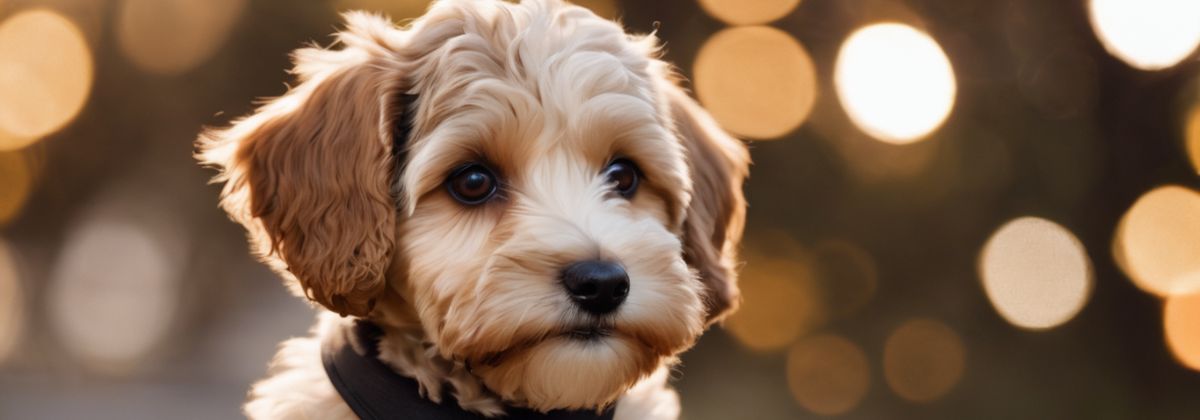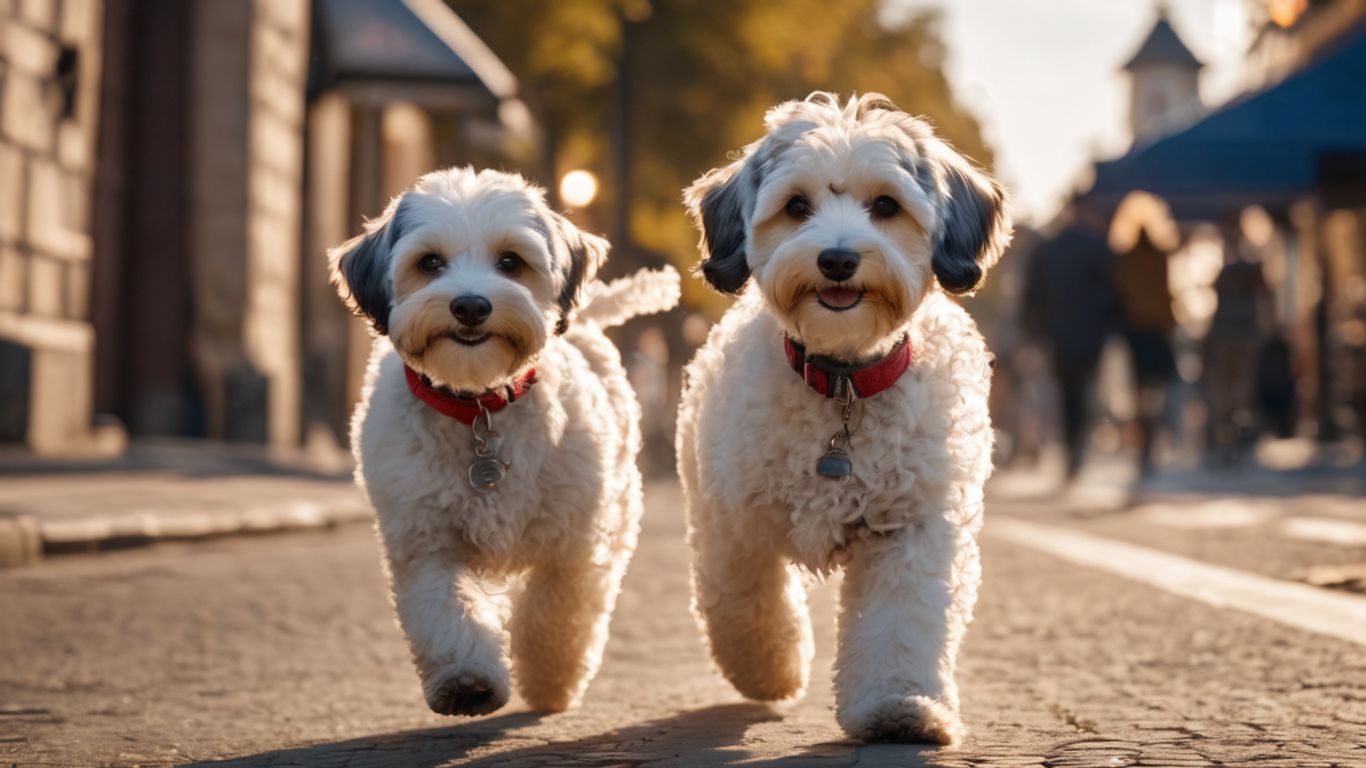18 Feb Schnoodle Dogs: Exploring the Marvels of this Charming Canine Crossbreed
Schnoodle dogs, a delightful crossbreed between Schnauzers and Poodles, have been gaining immense popularity in recent years. Combining the intelligence of Poodles with the charming personality of Schnauzers, these dogs make for wonderful companions in various households. In this post, we’ll explore the origins, characteristics, and everything you need to know about these adorable Schnoodles.The History and Origin of the Schnoodle Dogs
The story of Schnoodles begins with the deliberate crossing of Schnauzers and Poodles. Both breeds bring unique qualities to the table, and breeders sought to combine these traits to create a dog that possessed the intelligence of Poodles and the friendly disposition of Schnauzers.
Schnauzers, famous for their distinctive beard and eyebrows, contribute a robust and alert nature to the Schnoodle mix. Originally bred as rat catchers and farm dogs in Germany, Schnauzers brought a working-class charm to the crossbreed.
On the other side of the equation, Poodles are renowned for their intelligence, hypoallergenic coats, and elegance. Bred as water retrievers, Poodles brought a refined and trainable quality to the mix, making Schnoodles not only charming but also highly adaptable.
As Schnoodles began to make their way into households, their appeal skyrocketed. The combination of the Schnauzer’s loyalty and the Poodle’s intelligence created a winning formula for families seeking a loving and intelligent four-legged friend.
The rise in popularity of Schnoodles can be attributed, in part, to celebrity endorsements. As famous personalities showcased their Schnoodles on social media and in public, the breed gained attention and admiration.
Physical Characteristics of Schnoodles
-
Coat Types and Colors
- Curly Coats: Schnoodles with curly coats often have a distinct hypoallergenic quality, making them suitable for individuals with allergies. The tight curls not only contribute to their adorable appearance but also require regular grooming to prevent matting.
- Wavy Coats: Wavy coats offer a middle ground between curly and straight, providing a charming, tousled appearance. Wavy-coated Schnoodles still require regular grooming but may be slightly more manageable than their curly-coated counterparts.
- Straight Coats: While less common, some Schnoodles exhibit straight coats inherited from their Schnauzer lineage. These coats are typically shorter and may have a coarser texture, requiring less maintenance compared to curly or wavy coats.
- Diverse Colours: Schnoodles come in an array of colours, further enhancing their visual appeal. Common colours include black, white, apricot, and variations of brown. The combination of coat types and colours results in a visually diverse population of Schnoodles.
-
Size Variations
- Miniature Schnoodles: Ideal for apartment living, miniature Schnoodles are compact and typically weigh between 10 to 15 pounds. Their smaller size doesn’t compromise their energetic and friendly nature, making them perfect companions for smaller living spaces.
- Standard Schnoodles: Standard Schnoodles are larger, weighing between 30 to 75 pounds. Families with more extensive living spaces or those seeking a more robust playmate often opt for standard-sized Schnoodles. Despite their larger size, they maintain the intelligence and affectionate nature inherent in the breed.
-
Facial Features and Expressions
Schnoodles inherit distinct facial features from both parent breeds, resulting in expressive and charming visages. Their eyes are often alert and soulful, while their beards and eyebrows, reminiscent of Schnauzers, contribute to their endearing appearance.
-
Overall Build and Structure
Schnoodles generally have a sturdy and well-proportioned build. Their bodies are well-muscled, reflecting a combination of the athleticism of Poodles and the robustness of Schnauzers. The overall structure ensures that Schnoodles are agile, active, and well-suited for various activities.
Temperament and Personality
- Intelligence and Trainability: Schnoodles inherit the intelligence of their Poodle ancestors, making them quick learners with an eagerness to please. This trait not only facilitates training but also allows Schnoodle owners to engage in various mental exercises to keep their furry friends stimulated.
- Problem-Solving Abilities: The intelligence of Schnoodles extends to problem-solving. These dogs exhibit a knack for figuring out puzzles and tasks, making them not only trainable but also enjoyable companions for activities that stimulate their minds.
- Social and Affectionate Nature: Schnoodles are known for their social and affectionate demeanour. Their friendly disposition makes them excellent family pets, and they often form strong bonds with their human companions.
- Companionship and Loyalty: Schnoodles thrive on companionship and are known for their loyalty. Whether accompanying their owners on walks, playing in the backyard, or simply lounging on the couch, Schnoodles enjoy being part of the family activities. This loyalty fosters a strong connection between Schnoodles and their owners.
- Playfulness and Energetic Spirit: A delightful aspect of Schnoodles’ personality is their playfulness and energetic spirit. AlsoThese dogs love to engage in games and activities, making them suitable for families with active lifestyles.
- Adaptability to Living Environments: While Schnoodles possess an energetic spirit, they are adaptable to different living environments. Whether in a spacious suburban home or a city apartment, Schnoodles can thrive as long as their exercise and mental stimulation needs are met.
- Alertness and Watchful Nature: They may not be guard dogs in the traditional sense, but their keen senses make them aware of their surroundings, adding an extra layer of security to the household.
- Barking as Communication: Schnoodles may express themselves through barking, serving as a form of communication. Also, this trait, when properly managed through training, can contribute to a vigilant and aware household without excessive noise.
Training Techniques for Your Schnoodle Companion
-
Positive Reinforcement Training Techniques
Positive reinforcement is a highly effective training method for Schnoodles. It involves rewarding desired behaviours to encourage their repetition. Here are some positive reinforcement techniques you can use:
- Treat-Based Rewards: Using small, tasty treats as rewards is a powerful motivator for Schnoodles. When your dog follows a command or exhibits desirable behaviour, promptly reward them with a treat. This creates a positive association with the desired action and reinforces good behaviour.
- Verbal Praise: Schnoodles respond well to verbal praise and encouragement. When your Schnoodle performs a command correctly, use a cheerful and enthusiastic tone to praise them. Positive verbal reinforcement strengthens the bond between you and your dog.
- Playtime Rewards: Incorporating playtime into training sessions adds an element of fun for your Schnoodle. Use toys or engage in interactive play as a reward for good behaviour. This not only reinforces positive behaviour but also provides mental and physical stimulation.
-
Addressing Training Challenges
While Schnoodles are generally easy to train, they may encounter challenges along the way. Here are some tips for addressing common training challenges:
- Consistency: Consistency is key in training your Schnoodle. Use the same commands and rewards consistently, and ensure that all family members follow the same training routine. This helps avoid confusion and reinforces desired behaviours.
- Patience and Persistence: Be patient and persistent during training sessions. Schnoodles may take time to understand commands and may require repetition to learn new behaviours. Maintain a positive attitude and celebrate small victories along the way.
-
Training Sessions Tailored to Schnoodles
Schnoodles benefits from short and engaging training sessions. Keep sessions between 5 to 15 minutes to maintain their focus and prevent boredom. End each session on a positive note with a reward and praise.
Grooming Needs of Schnoodle Dogs
-
Understanding Schnoodle Coat Types
- Curly Coats: Schnoodles with curly coats are often considered hypoallergenic, making them suitable for individuals with allergies. However, these coats require regular grooming to prevent matting. Daily brushing is recommended to keep the curls in top condition and to remove any tangles.
- Wavy Coats: Wavy-coated Schnoodles have a charming tousled appearance. While they may be more manageable than curly coats, they still require regular brushing to prevent matting. Brushing every two to three days is generally sufficient to keep their coat in good condition.
- Straight Coats: Schnoodles with straight coats, inherited from their Schnauzer lineage, have a shorter and coarser texture. While these coats require less maintenance than curly or wavy ones, regular grooming is still essential. A weekly brushing routine helps keep their coat healthy and reduces shedding.
-
Regular Brushing and Maintenance
Regardless of the coat type, regular brushing is a fundamental aspect of Schnoodle grooming. Brushing not only prevents matting and tangling but also distributes natural oils, keeping the coat shiny and healthy. Use a slicker brush or comb suitable for your Schnoodle’s coat type to remove loose hair and prevent mats.
-
Bathing and Shampoo Selection
Schnoodles generally don’t require frequent baths, but regular grooming includes occasional bathing. Use a mild dog shampoo suitable for their coat type and skin sensitivity. Be mindful of their eyes and ears during bath time, and ensure thorough rinsing to avoid any residue.
-
Ear Cleaning and Dental Care
Schnoodles can be prone to ear infections, so regular ear cleaning is crucial. Use a vet-approved ear cleaner and gently wipe the ears to remove wax and debris. Additionally, incorporate dental care into your grooming routine by brushing your Schnoodle’s teeth regularly to maintain oral health.
-
Mishka Professional Grooming
While regular at-home grooming is essential, scheduling professional grooming sessions is advisable, especially if you’re not confident in handling all grooming tasks. Our groomers can provide services such as coat trimming, nail clipping, and expressing anal glands, ensuring a comprehensive grooming experience.
-
Eye Care and Tear Stain Prevention
Schnoodles, particularly those with lighter coat colours, may be prone to tear staining. Wipe the area around their eyes with a damp cloth regularly to prevent staining. If tear stains persist, consult with a vet to rule out any underlying health issues.
Common Health Issues of Schnoodle Dogs
- Allergies: Schnoodle Dogs, particularly those with Poodle ancestry, may be prone to allergies. Common allergens include pollen, certain foods, and environmental factors. Allergic reactions can manifest as skin irritation, itching, or gastrointestinal issues.
- Eye Conditions: Schnoodles may be susceptible to various eye conditions, including cataracts and progressive retinal atrophy (PRA). Regular eye check-ups are crucial to detect and address these conditions early on.
- Hip Dysplasia: Hip dysplasia is a common orthopaedic issue in many dog breeds, including Schnoodles. This condition occurs when the hip joint doesn’t fit into the hip socket correctly, leading to discomfort and potential mobility issues. Maintaining a healthy weight and providing regular exercise can help reduce the risk of hip dysplasia.
- Dental Problems: Dental issues, such as gum disease and tooth decay, can affect Schnoodles. Regular dental care, including brushing your Schnoodle’s teeth and providing dental chews, is essential to prevent oral health issues. Schedule professional dental cleanings as recommended by your veterinarian to ensure your Schnoodle’s teeth and gums remain in good condition.
- Ear Infections: Schnoodles, especially those with floppy ears, may be prone to ear infections. So, regular ear cleaning is crucial to remove wax and prevent moisture buildup.
- Patellar Luxation: Patellar luxation, a condition where the kneecap dislocates from its normal position, can occur in Schnoodles. It may lead to limping or an abnormal gait. Also, regular exercise and maintaining a healthy weight contribute to joint health, reducing the risk of patellar luxation. If you observe any signs of discomfort or lameness, consult with your veterinarian.
- Hypothyroidism: Hypothyroidism, a condition where the thyroid gland doesn’t produce enough thyroid hormone, can affect Schnoodles. Also, symptoms include weight gain, lethargy, and skin issues. Regular veterinary check-ups, including thyroid function tests, can aid in early detection and management of hypothyroidism.
The Last Word
Schnoodle dogs are generally healthy and robust companions, owners must be vigilant about potential health issues that can arise. Regular veterinary check-ups, a balanced diet, and attentive grooming practices are paramount for maintaining the well-being of these delightful crossbreeds. With proper care, early detection, and timely intervention, Schnoodle owners can ensure their furry friends lead happy, healthy lives filled with joy and companionship.





Sorry, the comment form is closed at this time.